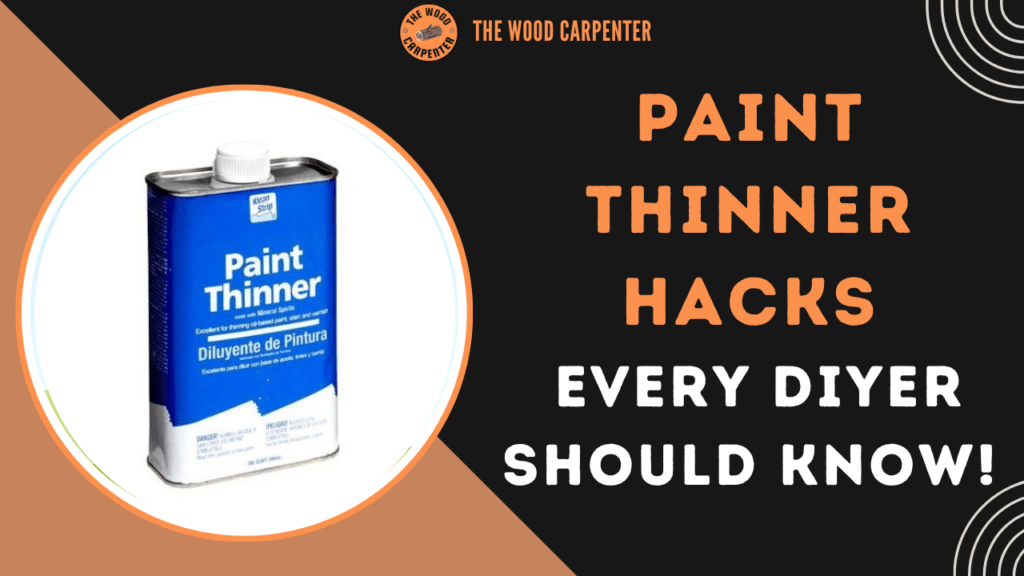
Anyone who works with oil-based paints, whether they are a professional painter or just someone who likes to do things themselves, needs paint thinner. It’s important to know how to use paint thinner, what kinds there are, how to stay safe, and the best ways to do it.
This is true whether you’re getting ready to paint, cleaning up after painting, or fixing up old tools. This complete guide tells you all you need to know about paint thinner, including what it is, how to use it, safety tips, and answers to common questions.
What Is Paint Thinner ?
Paint thinner is a chemical that breaks down oil-based paints, varnishes, and stains so that they are easier to use and spread evenly. It also helps clean brushes, rollers, and other painting instruments, and it can assist get rid of paint that won’t come off of certain surfaces.
Common Uses of Paint Thinner
Thinning Paint: Reduces viscosity for smoother application and optimal spray gun performance.
Cleaning Tools: Removes paint from brushes, rollers, and sprayers after use.
Surface Preparation: Cleans surfaces before painting by removing grease, oil, or old paint.
Paint Removal: Softens and removes dried or unwanted paint from surfaces and tools.
Degreasing: Cleans the mechanical parts and the tools by dissolving grease and grime.
Types of Paint Thinner
There are different sorts of paint thinners, and each one works well with certain types of paint and tasks. These are the most prevalent types:
| Type | Best For | Key Features & Cautions |
| Mineral Spirits | Thinning oil-based paints, cleaning | Low odor, versatile, petroleum-based |
| Turpentine | Fine arts, thinning oil paints | Strong odor, natural, fast-drying |
| Acetone | Removing adhesives, cleaning tools | Highly flammable, fast-evaporating |
| Lacquer Thinner | Thinning lacquer paints, cleaning | Potent, fast-drying, strong fumes |
| Denatured Alcohol | Thinning shellac, cleaning | Quick-drying, less toxic, for shellac |
| Water | Thinning water-based paints only | Non-toxic, not for oil-based paints |
Note: Always use the right thinner for the kind of paint you have. You can’t use oil-based thinners with water-based paints and the other way around.
Also read:
Varathane vs. Minwax: Which Wood Finish Brand Should You Choose?
Mastering Wood Staining: Essential Do’s and Don’ts
Water Stains on Wood: 6 Step-by-Step Tricks to remove it
How to Use Paint Thinner
1. Thinning Paint
Check the Label: Always refer to the paint manufacturer’s recommendations for the correct thinner and ratio.
Mix Carefully: Start with a small amount (usually a 3:1 or 4:1 paint-to-thinner ratio). Mix thoroughly and test the consistency.
Test Before Application: Apply a small amount to ensure proper flow and coverage. Adjust as needed.
2. Cleaning Tools
Fill a Container: Use a metal or glass container to avoid damage from solvents.
Soak Tools: Immerse brushes or rollers in paint thinner and agitate for 30 seconds to loosen paint.
Wash & Rinse: After cleaning, wash tools with soapy water, rinse, and dry thoroughly.
3. Removing Paint
Apply Thinner: Use a brush or cloth to apply a thin layer to the painted area.
Wait: Allow 10–20 minutes for the thinner to soften the paint.
Scrape Gently: Use a plastic scraper to remove softened paint. Repeat if necessary.
Clean Surface: Wipe with clean water and a cloth to remove any residue.
Safety Tips for Handling Paint Thinner
You need to be careful when you use paint thinners since they are strong chemicals. Follow these important safety rules:
Ventilation: Always operate in a place with good airflow so you don’t breathe in fumes.
Protective Gear: Wear gloves, goggles, long sleeves, and a mask to protect your skin, eyes, and lungs.
Fire Safety: Paint thinner can catch fire very easily. Avoid fires, sparks, and other sources of heat.
Safe Storage: Keep in a cold, dry location in properly sealed containers, away from kids and pets.
Proper Disposal: Never dump paint thinner down the drain. Follow your area’s rules for hazardous waste when you throw away old thinner and rags.
Avoid Mixing: Don’t mix paint thinner with other chemicals because it may cause harmful reactions.
Environmental Considerations
Paint thinners are classified as hazardous waste. Used thinner should be collected in a separate container and disposed of at a hazardous waste facility. Some thinners can be reused after allowing paint particles to settle and decanting the clear solvent.
Frequently Asked Questions (FAQ)
1. What is the difference between paint thinner and mineral spirits?
Mineral spirits are a specific type of paint thinner, known for lower odor and toxicity. Paint thinner is a broader term that can include mineral spirits, turpentine, acetone, and more.
2. Can I use paint thinner with water-based paints?
No. Paint thinner is formulated for oil-based paints. Use water or a water-based thinner for latex or acrylic paints.
3. How much paint thinner should I use?
Always follow the manufacturer’s instructions. A common starting ratio is 3:1 or 4:1 (paint to thinner), but this varies by product and application method.
4. Is paint thinner dangerous to my health?
Paint thinner vapors can be harmful if inhaled and may irritate skin and eyes. Prolonged exposure can lead to serious health issues. Always use with proper protection and ventilation.
5. Can paint thinner remove dried paint?
Yes, paint thinner will help get rid of dried oil-based paint off tools and surfaces by softening it. You might need to use it more than once for thick or stubborn layers.
6. What should I do if I spill paint thinner?
Ventilate the area, absorb the spill with kitty litter or newspaper, and dispose of the waste as hazardous material. Never use water to clean up paint thinner spills.
7. How should I store paint thinner?
Keep in a cold, dry location, away from heat, flames, and chemicals that don’t mix well with it. Store in a container that is well sealed and labeled. Keep away from kids and pets.
8. Can I reuse paint thinner?
Yes. Don’t touch the used thinner until the paint particles settle. Carefully pour off the clear liquid so you may use it again, and throw away the rest of the stuff the right way.
Final thoughts
Anyone who works with oil-based paints, varnishes, and stains needs paint thinner. It is a very useful product. Knowing what kinds there are, how to use them, and how to stay safe will help you obtain the best outcomes while keeping your health and the environment safe.
To have a safe and successful painting experience, always read the labels, observe the safety rules, and get rid of paint thinner properly.

